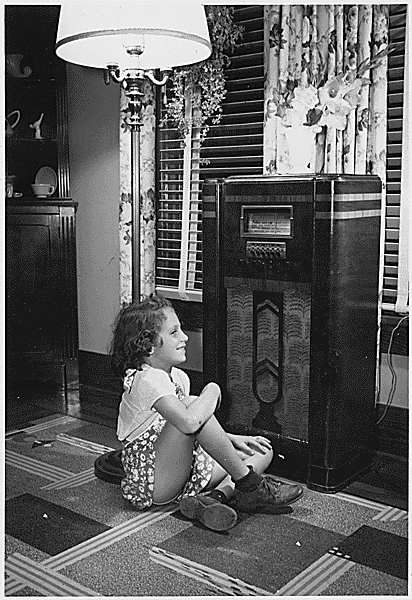In our previous two blog entries, we discussed how technological advancements like the printing press, steam engine, telegraph, and radio (see below) have helped spread information and the news to the public-at-large. In this entry, we will continue the discussion on how technology has helped shape the spread of information and the news.

Source: Wikipedia
While, the telegraph and radio were helpful in spreading information and news to the public-at-large, the television set (see below) provided a whole new means of providing information and news because it was the first time the public-at-large was able to see live images of a person or persons telling the news. According to Mitchell Stephens, author of “The History of News“, television broadcasting began on July 1, 1941 and the Federal Communications Commission allows eighteen television stations to begin broadcasting their signals. NBC (National Broadcasting Company) and CBS (Columbia Broadcasting System) (who orginially started out as radio stations) were the first broadcast in New York City with CBS broadcasting newscast in two fifteen minute intervals to a small audience.
Source: http://www.wired.com
Mitchell Stephens also mentions that by 1949, there are over 100 television stations in the United States and that the first newscasts were done by Douglass Edwards (“CBS TV News”)and John Cammeron (NBC’s “Camel News”.
Overall, as one can see, technological advancements like the printing press, steam engine, telegraph, radio, and the television of news and information. In the next blog posting, more advancements in technology will be discussed to help people further understand how technology has helped in acquiring news and information more easily and effectively.

Leave a response